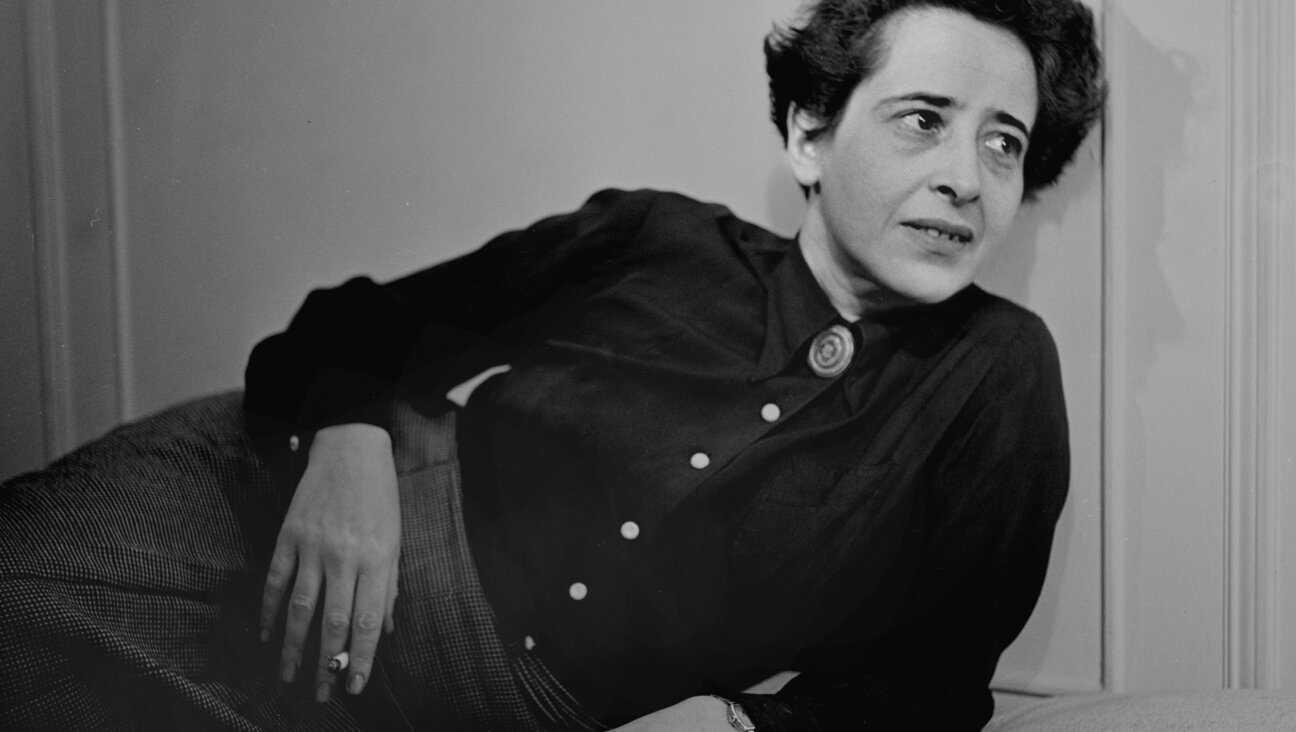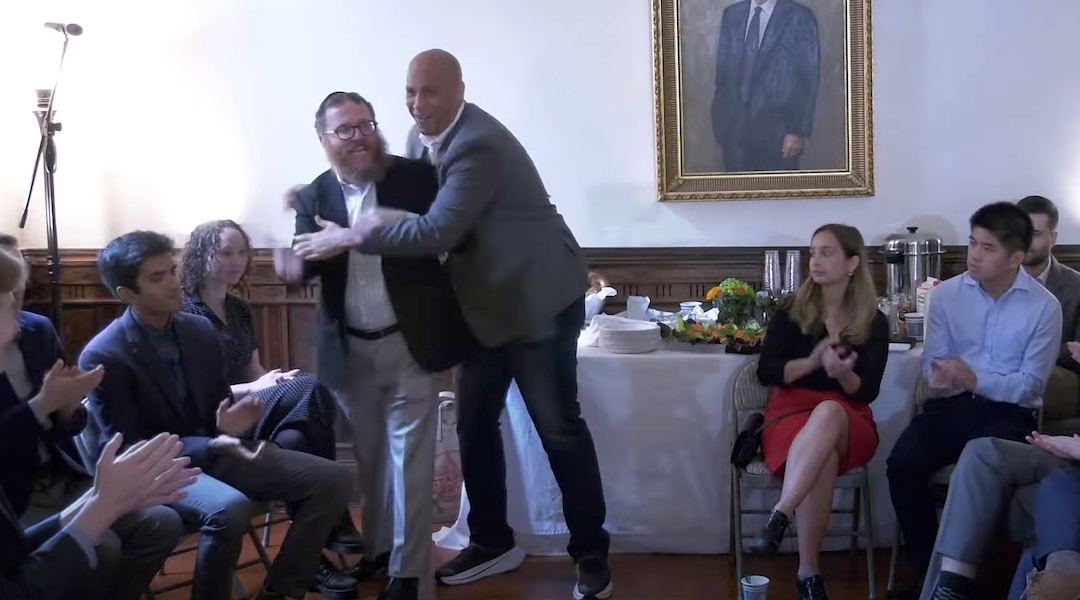Stranger in a Strange Land

In “Rapture Ready: Adventures in the Parallel Universe of Christian Pop Culture” (Scribner, 2008), Daniel Radosh presents a delightfully varied compendium of Christian items known among many actual Christians as “Jesus junk.” These include candy conversation hearts imprinted with “John 3:16” and “He Lives” instead of “Kiss Me” and “Sweet Talk.” There are Faith Pops (wrapped in bible verses) and Cross Pops (shaped exactly the way you think). There are Testamints. There’s a T-shirt that looks like it’s adorned with the Mountain Dew logo, but when you look closely it says “Do the Jew.” (“The Jew” would be Jesus, not, say, Abe Foxman.) There are gospel golf balls (“Now when you lose a golf ball you will be sharing the Good News of Jesus Christ!”) with a pastor’s endorsement: “This golf ball is the most effective outreach tool I have ever seen in golf.” Which, Daniel points out, raises the question of exactly how many golf-based outreach tools there are.

Daniel’s point isn’t just to snigger, though. (Full disclosure: He and his wife are friends of mine, but I would read his New Yorker pieces and politics-and-pop-culture blog obsessively even if I didn’t know the guy.) He goes on to talk about the power of objects, outward statements of belief, the meaning of artifacts in contemporary religious life, and Christianity’s struggle to find a place in the modern world — through rock music, fashion and yes, golf balls. And, he notes, he himself has a mezuzah on his door. “It’s a signifier of a Jewish household and, ideally, a reminder to me that as I go out into the world each day I should stay true to my heritage and my principles,” he writes. True that. And as a way to broadcast and remember one’s faith, is a mezuzah so superior to a golf ball?
As Daniel told me in an interview, “A mezuzah, as opposed to a novelty mug, is a ritual artifact that is ancient and inherently sacred. But both show how people project their beliefs into the physical world. Objects help us live out our beliefs.”
Before you say, “But God commanded us to put up mezuzot; he didn’t tell us to put his words on a refreshing mint,” think about the intent of the users of the objects in question. You may believe that a mezuzah contains the literal word of God, but not everyone with a mezuzah on his or her door believes it. It’s a statement of identity — and often of fashion — as much as it is one of belief. (And the gospel-golf-ball-purchasers do all believe, unlike our peeps, so again, stop sneering.) Further, if you want to get into a tackiness contest, have you seen some of the mezuzot in synagogue gift shops lately? Or the kippot? Or the chais and hamsas and red strings and Jewish message tees on the Internet? And hello, I went to an Orthodox day school, where boys collected trading cards of great rebbes and Gedolim, where we sang “Puff the Kosher Dragon” and read “Mendy and the Golem” comic books. (I read Daniel’s entire book through the lens of someone who went to day school, and saw a whole lot of similarities.)
Daniel’s childhood, unlike mine, didn’t include immersion in Jewish ritual. He grew up “culturally Jewish” in Brooklyn; he didn’t become bar mitzvah and he “set foot in a synagogue maybe twice in my childhood.” But as an adult, when he started dating Gina, she encouraged him to explore Judaism. The couple soon became active in the secular humanist movement. But the book’s genesis was in a Christian rock festival Daniel attended with Gina’s born-again sister and her friends (one of whom deemed a band awesome because they prayed four times during their set). And soon Daniel was watching the children’s TV show “Bibleman” and attending Christian raves (whoops, “DJ-led worship”).
“Many Jews and mainline Christians are used to thinking about religion as our sanctuary from the everyday world,” he told me. “Shabbat is different from our everyday life. But evangelicalism takes exactly the opposite approach: There should be no distinction between Sunday and Monday. If you set aside a place in your life for faith, you aren’t living your faith properly.”
So Daniel went to Christian comedy performances, attended a bunch of rock concerts and a Christian skateboard festival, sat in on a marketing meeting with Christian Bible packagers, read Christian young adult novels and romances. He was honest with everyone he met about his own religious identity; the book details the various responses he got — from cluelessly enthusiastic to sweet to alarming.
Daniel’s a terrific reporter and a funny writer, but I think the book’s strongest, most heartfelt moments come when he loses his poise. While acting in a massive pantomimed production of a Passion Play in Eureka Springs, Ark., he felt compelled to elaborate on his role as one of the Jews shrieking for Jesus’ death. “I wanted to do something to counter what I was seeing,” he told me. “I really got caught up in the moment; it really was almost a hallucination. I couldn’t let it play out the way it was gonna play out. It wasn’t one night in Arkansas in 2006; it was something that had been acted out so many times, and I was caught up in the eternal retelling. It felt as though that one night was part of a continuum.” So Daniel began pantomiming the part of a Jew reluctant to see Jesus crucified, using oversized gestures to indicate that he wasn’t part of an angry mob. “Even though I knew the play would continue as it has always continued, I hoped it would send ripples out throughout the drama, that there would be one element that had been there that never was before.”
In an even more powerful scene, he confronts someone with an “IVF Violates Human Dignity” flier at the “Rock for Life” table at a Christian rock festival. In the book, Daniel talks about his and Gina’s struggle to have children, and how it felt to read the description in the flier of his children as “objects” and “commodities.” He shows the Rock for Lifer the picture of his toddler twins, Milo and Margalit, that he carries on all his trips, and says, “Do me a favor. Look at this picture, then look me in the eyes and tell me that I think of them as objects.”
But Daniel didn’t only encounter haters. He met thoughtful, compassionate evangelicals in his travels — musicians, writers and preachers who focus on the mercy, humility and forgiveness in Jesus’ teachings. They’re not all about the smiting. Such people can be a force for moderation, he believes, bringing more open-mindedness to their culture through their art. Their portraits are in the book too — people like Jay Bakker, the tattooed son of Tammy Faye and Jim Bakker who preaches in hipster Williamsburg, Brooklyn, and denounces homophobia. The book is full of surprises and tonal shifts, and made me look at not just evangelical culture but American pop culture and Jewish culture in a new light.
Write to Marjorie at [email protected].
The Forward is free to read, but it isn’t free to produce

I hope you appreciated this article. Before you go, I’d like to ask you to please support the Forward.
Now more than ever, American Jews need independent news they can trust, with reporting driven by truth, not ideology. We serve you, not any ideological agenda.
At a time when other newsrooms are closing or cutting back, the Forward has removed its paywall and invested additional resources to report on the ground from Israel and around the U.S. on the impact of the war, rising antisemitism and polarized discourse.
This is a great time to support independent Jewish journalism you rely on. Make a gift today!
— Rachel Fishman Feddersen, Publisher and CEO
Support our mission to tell the Jewish story fully and fairly.
Most Popular
- 1

Opinion The dangerous Nazi legend behind Trump’s ruthless grab for power
- 2

Opinion A Holocaust perpetrator was just celebrated on US soil. I think I know why no one objected.
- 3

Culture Did this Jewish literary titan have the right idea about Harry Potter and J.K. Rowling after all?
- 4

Culture Trump wants to honor Hannah Arendt in a ‘Garden of American Heroes.’ Is this a joke?
In Case You Missed It
-

Culture I have seen the future of America — in a pastrami sandwich in Queens
-

Culture Trump wants to honor Hannah Arendt in a ‘Garden of American Heroes.’ Is this a joke?
-

Opinion Gaza and Trump have left the Jewish community at war with itself — and me with a bad case of alienation
-

Fast Forward Trump administration restores student visas, but impact on pro-Palestinian protesters is unclear
-
Shop the Forward Store
100% of profits support our journalism
Republish This Story
Please read before republishing
We’re happy to make this story available to republish for free, unless it originated with JTA, Haaretz or another publication (as indicated on the article) and as long as you follow our guidelines.
You must comply with the following:
- Credit the Forward
- Retain our pixel
- Preserve our canonical link in Google search
- Add a noindex tag in Google search
See our full guidelines for more information, and this guide for detail about canonical URLs.
To republish, copy the HTML by clicking on the yellow button to the right; it includes our tracking pixel, all paragraph styles and hyperlinks, the author byline and credit to the Forward. It does not include images; to avoid copyright violations, you must add them manually, following our guidelines. Please email us at [email protected], subject line “republish,” with any questions or to let us know what stories you’re picking up.















